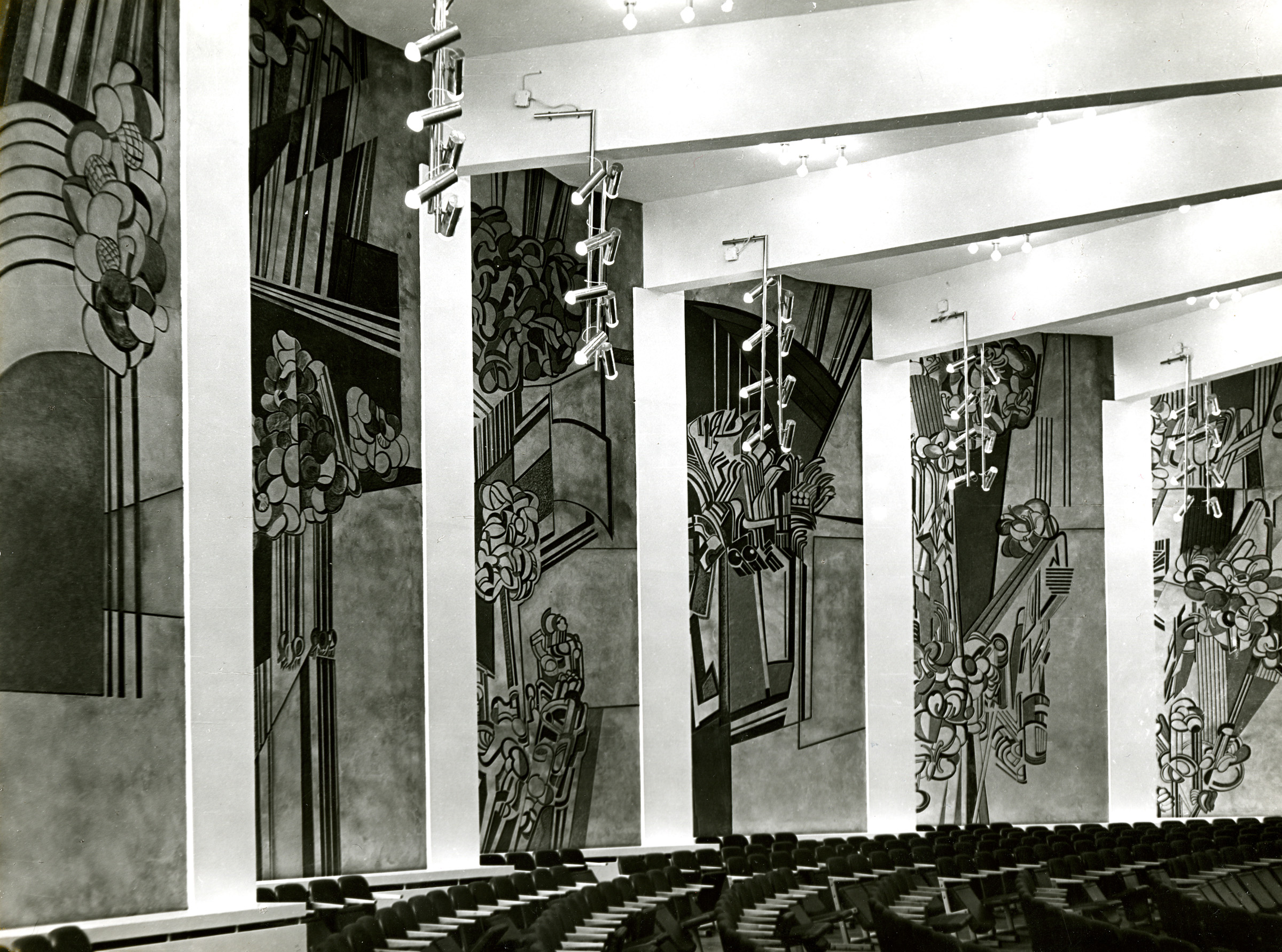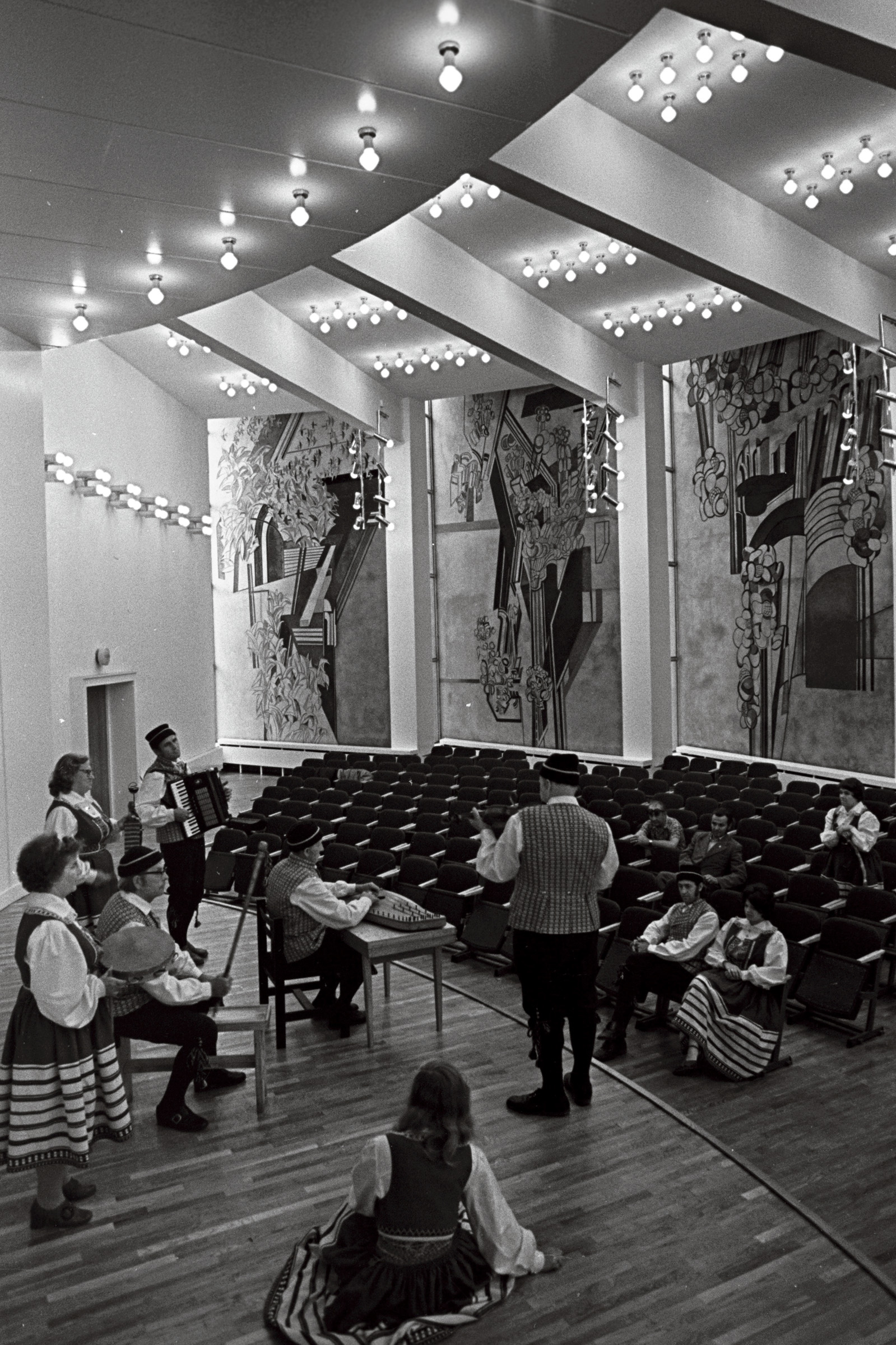Sgraffito in the Main Building of Põdrangu State Farm
Year of completion: 1978
Address: Lääne-Viru County, Sääse Borough, Põdrangu tee 1
Author Eva Jänes
Sgraffito
8 vertical modules, 750 x 490 each, 294 m² in total
Not under conservation as a cultural monument
The new club- and office house of the Põdrangu state farm practising poultry- and animal breeding was built during the heyday of agricultural economic entities. The complex was designed in the institute Eesti Maaehitusprojekt (Estonian Rural Design), the architect was Maara Mets, and the interior architect was Maia Laul who had already worked with Eva Jänes before. The building can be divided into two parts – the lower part housing the offices, and the arched lofty fan-like auditorium attached to it. The more exciting and valuable part is undoubtedly the latter.
The ceiling of the auditorium is enhanced by light fixtures designed by Maia Laul, under which initially stood rows of seats in a semicircle formation. The room is dominated by Eva Jänes’s sgraffiti on eight vertical wall panels on the jagged clerestory’s window openings. The preference of the state farm’s chairman at the time, a figurative folklore-themed design, was cast aside at the art council in favour of the abstract idea proposed by the artist, through which the unique, almost sacral room was born. There is nothing in the history of Estonian art that could compare to the mastery of technique or scale of these sgraffiti.
The substantial project lasted for two years and meant considerable self-sacrifice for Eva Jänes and her family – living on site, and switching schools for the child. Every morning, two plasterers were at the site preparing the wall surface of the next section. Fragments that were to be painted that day were cut out of cartone paper, with which the outlines were transferred onto the damp plaster. The figures were scratched out of different-coloured layers of plaster, the tones being light grey, dark grey and green. The gigantic murals in the style of geometric abstraction enable a deeper connection with nature. The movement of light entering from the windows between the panels bring the vigorous figures to life in a magnificent rhythm, becoming a collaborator on the embossed artwork.
The sgraffiti that have stood in an unheated room for 28 years are in good condition, despite the roof having leaked at some point. The same cannot be said about the building’s construction and interior design. The felicitous architecture, excellent interior design, and inimitable murals of the fan-like auditorium amount to an advanced and organic whole that deserves restoration and exhibiting as such. It should be taken under conservation imminently, as the two current owners of the building – the last chairman of the state farm, and the parish – have not found a new use for the large building, and the auditorium stands without use.
Reeli Kõiv








